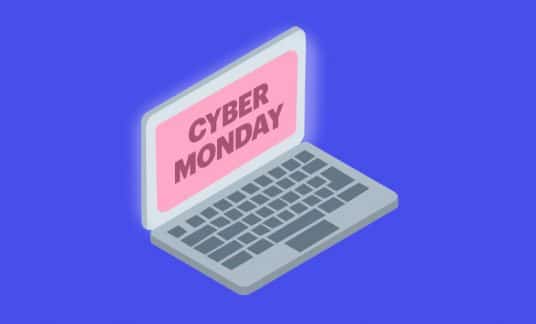A personal brand isn’t who you are. It’s how others perceive you.
As an entrepreneur, the success or failure of your business is determined by how others perceive you. You need to be capable at the service you’re offering, but at the end of the day, the old saying is true: “People do business with people they know, like and trust.”
Your personal brand gets people to know, like and trust you at all stages of your funnel, from a fresh lead to a repeat customer. Personal branding is of vital importance for entrepreneurs because it influences how people perceive you and your business.
If they like what they see, you can land a new customer, just like that.
What is a Personal Brand?
According to a study by Moz, 51% of respondents reported they made important financial or legal decisions based solely on Google search results. This is an opportunity for you because creating a personal brand produces content, such as your blog or YouTube channel, podcast interviews, articles you’ve written around the web, social media profiles and more. Those search results are your personal brand.
Your personal brand is also what values your target audience associates you with.
For example: Elon Musk. Everyone knows who he is as well as his companies Tesla and SpaceX. But it’s his personal branding strategy that has allowed these companies to become successful.
The auto industry said they couldn’t move away from fossil-fueled vehicles in our lifetime. He’s proven that wrong as Tesla gains market share. We can’t colonize Mars, governments said. SpaceX is pushing the frontiers of space exploration more than we’ve seen since the moon landing.
His personal brand is all about visionary projects to move humanity further. His drive to achieve huge scientific feats is inspiring. This component of his personal brand draws people in and gets them excited about his companies.

A personal brand positions you as an expert in your field and by extension, builds momentum and leads for your business.
Typically, the components of a strong personal branding campaign include a digital content platform (blog, YouTube or podcast), active and engaging social media profiles and an email list with valuable content on a weekly basis. Whatever the medium, high-quality content is at the root of every personal brand.
5 Steps to Building a Personal Brand as an Entrepreneur
Developing your personal brand takes strategic planning before you ever produce a piece of content. Doing the groundwork first ensures your content will attract the right audience and achieve the business results you want.
Step 1: Discover Your Core Values and Skills
The first step toward building your personal brand is knowing who you are. Take at least an hour and write down answers to the following questions. This will give you a starting point for launching your brand.
- What are you already known for?
- What do you want to be known for?
- What hard skills do you have? (For example: Leading workshops, writing, accounting, business planning.)
- What soft skills do you have? (For example: Honesty, dependability, problem solving.)
- What values matter the most to you? (For example: Creativity and freedom? Integrity and perseverance? Innovation?)
- What’s your “why”? Why do you do what you do?
- What is your ultimate business goal? How will you measure success along the way?
Step 2: Define Your Target Audience
The most difficult part of creating a personal brand is Step 1. Once you have that solid foundation, everything else is easier to put together.
For example, if you’re a dog trainer, your ideal customer isn’t simply every dog owner within a 100-mile radius of your location. That’s too broad. You need to connect to others with values, not simply that they have a dog and live near you.
A proper target audience could be: families adopting a new dog who need help training around children and in social situations. In this case, you’d want to highlight your previous track record with families, be warm and inviting and reassure families you understand their dynamics.
Another target audience could be dog owners of sporting breeds who are interested in agility or self-defense training. With this audience, the values you want to project are much different. These are experienced dog owners looking for professional guidance, perhaps even for competitions. You need to showcase authority, deep knowledge of agility sports and professionalism.
The values you showcase need to align with your target audience to authentically draw them in.
Step 3: Create a Content and Marketing Plan
Now that you know your values and who you’re serving, it’s time to create the action plan to get you noticed and grow your personal brand.
Your personal brand is in many ways intangible: it’s your values, what you stand for, your style, your personality.
But none of those things are shown to people by accident. A personal brand is still built with the same precision as a corporate marketing plan and for the same reason: delivering a consistent message and brand identity needs to be carefully planned and executed.
Start by making a list of all the ways people will interact with you and your brand, both online and offline.
Online may include:
- Reading an article/watching a video.
- Browsing your social media.
- Emailing you.
- Viewing your website.
Offline may include:
- Working with you on a project.
- Seeing you at an event.
- Watching you give a presentation.
- Viewing your receipt/invoice.
All of these touchpoints need to be in your marketing plan because they’re all opportunities to deliver on your personal brand. If you want others to think of you as funny, then all these interactions need to be funny.
Standard boilerplate contact form automated reply email? Not so funny. Customize it. Write a personal note with a joke, sign it with your name. It may be an automated email that is only a small piece of your overall content but personal brands are made in the details.
Then, make a list of all the content channels you’re going to pursue. For many entrepreneurs, this can be:
- A website
- Social media profiles: Instagram, Facebook, LinkedIn
- YouTube channel (if doing video)
- Podcast (if you’re going to host one)
You don’t need to be on every network or do everything other entrepreneurs are doing. It’s better to start small and scale up than go too big and lose focus.
Make a schedule for each content channel of how often you’ll post new content and any special events. For example, you could post to Instagram 3 times a week, publish a new article every week and host a live question-and-answer hour every Thursday at 9 a.m. on Facebook Live.
Whatever your content plan looks like, schedule it in your calendar and stay consistent. Part of your personal branding campaign is training your audience to know what to expect from you and nothing does that more than a predictable content schedule.
Step 4: Get Your Name Out There
Besides your own content, look for opportunities to grow your presence by guest posting articles on notable websites in your niche, or being a guest on relevant podcasts.
Partner with other people or brands who complement your personality and business. This exposes you to their audience and grows yours.
Kanye West has done this expertly through his partnership with Adidas and his Yeezy shoe launch. Adidas has seen major sales jumps since the ongoing partnership started and West’s status as a fashion icon has increased. Adidas has never released numbers, but West is quoted in Forbes as saying new launches of 40,000 pairs were selling out within minutes — repeatedly.
5 Ways to Get Noticed
- Pitch article ideas to notable online publications, such as Forbes or Entrepreneur, or ones specific to your industry.
- Pitch topic ideas to podcast hosts in your niche.
- Attend networking events and pitch to be a speaker.
- Partner with a brand in your niche to post on their social media or appear in a YouTube video.
- Create a helpful offer your target customers would love to have and then give it away for free. This lead magnet will draw people to you and it’s a perfect call to action for all your content pieces.
You probably noticed most of those methods involve pitching your own ideas to other companies or publications and doing a lot of legwork. Personal branding techniques like this take effort, time and hard work but the results are worth it.
Step 5: Always Provide Value
This last one should go without saying but you need to provide tangible value to your audience in everything you do. Every social media post, article, guest podcast interview and comment you leave on someone else’s content. Whatever you do, do it with purpose.
Even if it’s “just an Instagram photo” or “just a quick comment of encouragement.” Before hitting post on anything, ask:
- “How does this help my target customers, or this specific person I’m speaking to?”
- “How can I add more value here?”
- “How does this piece of content link back to my overall purpose and core values?”
If you can’t come up with good answers to those 3 questions, don’t post it.
Building a Personal Brand is Worth It
Creating a personal brand establishes trust with your customers, draws in new leads and expands the opportunities available to you and your company.
But it needs to be strategic. Take time in uncovering your true core values and what you want to be known for. This knowledge is a necessary personal brand builder. Without it, your brand will never gain the traction it deserves.
Know your values, create an action plan for content and outreach and then execute that plan consistently and you will reap the rewards of a personal brand opening doors for you that you didn’t even know were possible.













